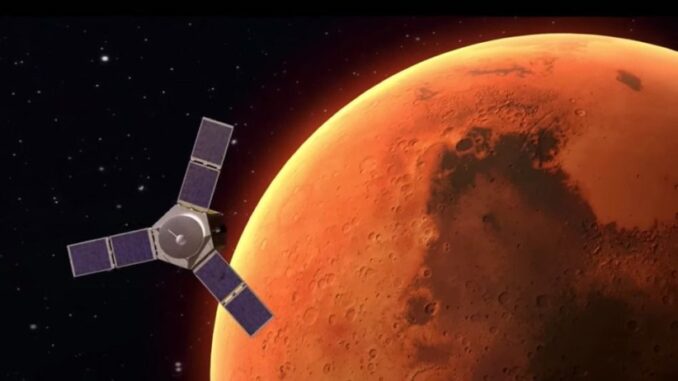
After seven months, the Hope craft launched by the United Arab Emirates has successfully entered the orbit of Mars. Next up are China’s Tianwen-1 and the US’s Mars 2020. February is full of nail-biting moments of truth for three countries — indeed, the world — as three separate Mars missions approach the red planet.
The Hope craft launched by the United Arab Emirates has successfully entered the orbit of Mars. China’s Tianwen-1 and the US’s Mars 2020 craft are also heading for the red planet with orbiters and rovers.
Of the three missions, the US’s brings the most experience and confidence. It is also the most innovative. Its cargo includes the first made-for-Mars helicopter.
It will be the first to test flight on another planet, in an atmosphere that’s thinner than the Earth’s, and may help our understanding of future human spaceflight beyond the moon.
But, space is never easy. So, the folks at NASA will be just as tense as their colleagues in the UAE and China.
That said, the US mission is the last of the three scheduled to arrive, so, for now at least, the Americans can sit back, relax, and watch how the others fare.
The Emirates Mars Mission launched its probe called Hope on July 20, 2020, from Tanegashima Space Centre, Japan.
Hope is the first Arab interplanetary mission. It aims to provide scientists with a complete picture of the Martian atmosphere. And they promise to share the data.
On February 9, 2021, Hope began what’s called a Mars Orbit Insertion (MOI).
The so-called “burn” was always going to be “a rather nerve-wracking 27 minutes,” in the words of one EMM spokesperson. That’s when the orbiter has to burn off fuel and slow down to meet its target.
The operation was fully autonomous, with the probe 11 minutes’ radio-time away from Earth.
Hope used six thrusters to provide 650 Newtons of power. Firing the thrusters for that long can expose the spacecraft to a lot of stress, from vibrations through to heat. It is “easily the most dangerous operation of the mission,” said the spokesperson.
But all went well. The Hope Probe now starts a two Earth-year mission (or one Martian year). And the UAE has become the first Arab nation to get to Mars.
Next up, it’s China with the country’s first independent Mars mission. It was launched on July 23, 2020, from the Wenchang Space Launch Center in Hainan province.
Tianwen-1 is also expected to enter a Martian orbit during the second week of February. In fact, it’s hoped the Chinese robotic probe will make it the day after the EMM — and two days before the Chinese New Year.
The spacecraft will conduct a “braking” operation to decelerate its speed to a point at which it can be captured by Mars’ gravity. As with the EMM, the Tianwen-1 probe will survey the Martian atmosphere.
But that’s not all. The main part of the mission is scheduled for May when China aims to soft-land a rover in the southern part of Mars’ Utopia Planitia.
China sees Tianwen-1 as a step towards future missions that would bring back rock and soil samples from Mars to Earth.
The US- latest Mars mission involves a new rover called Perseverance and a helicopter called Ingenuity. Ingenuity is strapped to the belly of the rover.
The rover is due to land on February 18 at about 3.55 p.m. EST at a place called Jezero Crater.
It will descend through the Martian atmosphere at a speed of about 20,000 kilometers per hour/kph It will be slowed with a parachute and a powered descent to about 3.2 kph. Then, a large sky crane will lower the rover on three bridle cords until it lands softly on six wheels.
NASA describes Perseverance as a “robotic astro-biologist.” It is the largest and “most sophisticated” rover ever sent to the Red Planet’s surface. Perseverance will look for signs of ancient Martian life. It will also demonstrate technologies for making oxygen from the Martian atmosphere. It is hoped the mission will prepare the ground for future human missions to Mars and our moon.
These three missions were timed to launch when the distance between the Earth and Mars was relatively short. It usually takes about nine months to get to Mars, but these missions were able to cut that trip down to seven. And despite the added challenges brought by the COVID-19 pandemic, not one of them missed the opportunity to go.



